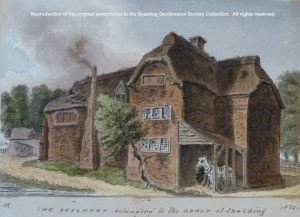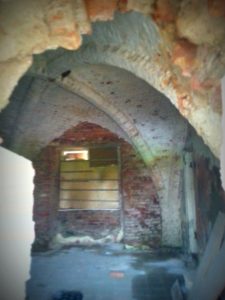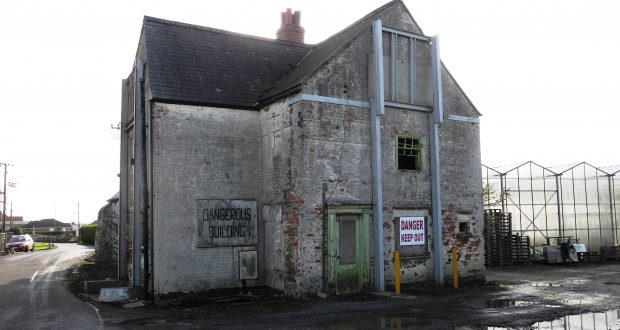
An 1823 watercolour of the Low Fulney building by artist Hilkiah Burgess
If, however, you look beyond the changes and additions of recent centuries, it turns out to hold an extraordinary secret.
Inside are two brick vaulted rooms dating from medieval times. Tradition has it that the building contains some of the last remnants of Spalding’s historic Priory.
The building has been known at various times as Thornholm Grange and as the Vetchery or Vaccary, archaic terms for a dairy or dairy farm, and may have served this purpose until the dissolution of the Priory under Henry VIII.
After this it passed into private hands and was extensively remodelled from the late 16th century onwards to reflect its new residential status.
An 1823 watercolour by the artist Hilkiah Burgess depicts it as a rather grand three-storey thatched farmhouse. However, further alterations were carried out later in the 19th century, and by 1936 it had passed into the hands of the Land Settlement Association, which used it as offices for its colony at Low Fulney which aimed to resettle unemployed people on smallholdings.
Despite its remarkable and chequered history, the building now stands empty and neglected. It has been listed by Historic England as Grade II*, the second highest category of listing, and although some emergency repairs have been carried out in recent years, its condition is rated as ‘very bad’.
Members of Spalding Gentlemen’s Society (despite its name, open to both men and women), which is dedicated to preserving our history and heritage, have become increasingly concerned that there seems to be no prospect of improving its current desperate state.
The building sits on private land, on an out-of-the-way site with limited access and, given its present condition, it is hard to see an alternative use for it.
The society is keen to increase awareness of the predicament of this ancient building and hopes efforts will be made to preserve its heritage, but at the moment its prospects look bleak, like those of so many historic buildings which have fallen on hard times.

A rare peak inside the crumbling building.
 The Voice of Spalding and South Holland
The Voice of Spalding and South Holland




